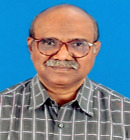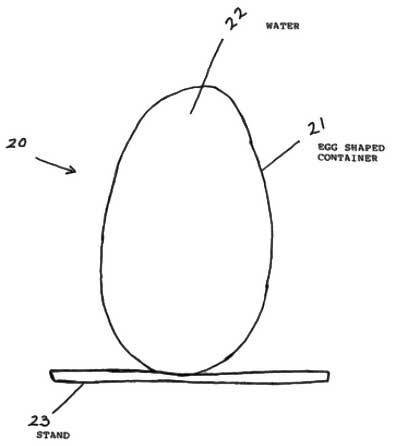Marc Abrahams's Blog, page 504
March 29, 2013
The title translates awkwardly: Piano Music from Tropical Fish
Sometimes a study’s title translates awkwardly from one language into another. Here is such a case, with Chinese making an awkward transition into English:
“On The Creation Of Piano Music For Children From Tropical Fish By Zhao Xi,” Jing Zhang, Huangzhong-Journal of Wuhan Music Conservatory, January 2003.
“The paper show the writer’s opinions on creation of children’s piano music through the analysis of Tropical Fish, a piano suite for children by Zhao Xi. It proposed that to choose the subject matter was the most important issue need to thinking about for Chinese children’s piano music composition nowadays.”

Zowie: “Wow”, the DNA code, interstellar communications
Many strands of thought weave together in this study:
“The ‘Wow! signal’ of the terrestrial genetic code,” Vladimir I. shCherbak, Maxim A. Makukov, arXiv:1303.6739v1, March 27, 2013. (Thanks to investigator Vaughn Tan for bringing this to our attention.) The authors, at Kazakh National University and the Fesenkov Astrophysical Institute, both in Almaty, Republic of Kazakhstan, explain:
“It has been repeatedly proposed to expand the scope for SETI, and one of the suggested alternatives to radio is the biological media. Genomic DNA is already used on Earth to store non-biological information. Though smaller in capacity, but stronger in noise immunity is the genetic code. The code is a flexible mapping between codons and amino acids, and this flexibility allows modifying the code artificially. But once fixed, the code might stay unchanged over cosmological timescales. Thus, it represents a reliable storage for an intelligent signature, if that conforms to biological and thermodynamic requirements. As the actual scenario for the origin of terrestrial life is far from being settled, the proposal that it might have been seeded intentionally cannot be ruled out. A statistically strong signal in the genetic code is then a testable consequence of such scenario. Here we show that the terrestrial code displays a thorough precision orderliness matching the criteria to be considered an informational signal. Simple arrangements of the code reveal an ensemble of arithmetical and ideographical patterns of the same symbolic language. Accurate and systematic, these underlying patterns appear as a product of precision logic and nontrivial computing rather than of stochastic processes. The patterns are profound to the extent that the code mapping itself is uniquely deduced from their algebraic representation. The signal displays readily recognizable hallmarks of artificiality. Besides, extraction of the signal involves logically straightforward but abstract operations, making the patterns essentially irreducible to any natural origin. Plausible way of embedding the signal into the code and possible interpretation of its content are discussed. Overall, while the code is nearly optimized biologically, its limited capacity is used extremely efficiently to store non-biological information.”
Detail from the study:

BONUS: The further such adventures of Vladimir shCherbak .

The Coffin Blew Up (and maybe something about why it did)
This newspaper report gives public details about an embarrassing explosion:
“The Coffin Blew Up“, The Meridan [Missouri, USA] Daily Republican, July 21, 1890. (Thanks to investigator Erwin Kompanje for bringing this to our attention.) Here is a reproduction of the entire article:
BONUS (mostly unrelated): The 2012 Ig Nobel Prize for medicine honored the efforts of two doctors to keep modern colonoscopy patients from exploding.

March 28, 2013
Waiters’ tips and the weather: Analysis of a possible connection
 Do waiters and waitresses get better tips on sunny days? In 1979, a groundbreaking experiment by professor Michael Cunningham (currently at the University of Louisville) suggested the answer might be ‘Yes’. (reference : Weather, mood, and helping behavior: Quasi experiments with the sunshine Samaritan. Journal of Personality and Social Psychology, 37, 11, pp. 1947-1956.)
Do waiters and waitresses get better tips on sunny days? In 1979, a groundbreaking experiment by professor Michael Cunningham (currently at the University of Louisville) suggested the answer might be ‘Yes’. (reference : Weather, mood, and helping behavior: Quasi experiments with the sunshine Samaritan. Journal of Personality and Social Psychology, 37, 11, pp. 1947-1956.)
But now a newer study (from Scripps College and Stanford Law School) has obtained experimental data which queries the findings. Authors Sean Masaki Flynn and Adam Eric Greenberg explain :
“As previously discussed, Cunningham (1979) dealt with actual weather conditions by measuring light levels on 13 spring days and seeing how 130 customers (10 per day) tipped on those 13 days. He did find a positive correlation between light levels and tipping, but his sample was extremely small and he did not make any attempt to account for other factors that might have influenced tips.
and continue:
“Finally, and perhaps most importantly, our study was conducted using receipts from only one restaurant. There is, consequently, no way to tell whether the tipping behavior observed at this particular restaurant would have been different if the restaurant had been transported to a different geographic location where it could have been exposed to a different customer mix.”
Nevertheless, the authors sum things up in one short, punchy sentence:
“Our primary finding is that weather did not significantly affect tipping behavior”
[our emphasis]
see: Flynn, Sean Masaki and Greenberg, Adam Eric (2011): Does weather actually affect tipping? an empirical analysis of time series data. Journal of Applied Social Psychology, Volume 42, Issue 3, pages 702–716, March 2012. A full version of the paper may be found here.
Further tipping explorations : Waitresses’ facial cosmetics and tipping: A field experiment

Saucy for the goose, saucy for the gander, cunnilingus for fruit bats
Ed Yong reports (with relish) on a successor to the Ig Nobel Prize winning study on fruit bat fellatio:
Oral sex in fruit bats is clearly a hot area of research. In just four years, the number of papers on this topic has doubled from, er, one to two.
It started in 2009, with a study that described regular fellatio among the short-nosed fruit bat. It earned its authors an Ignobel Prize in 2010….
Now, to balance things off, a new paper describes cunnilingus among another fruit bat species—the Indian flying fox….
 The new study is:. “Cunnilingus Apparently Increases Duration of Copulation in the Indian Flying Fox,Pteropus giganteus,” Jayabalan Maruthupandian and Ganapathy Marimuthu [pictured here], PLoS ONE, March 27, 2013. The authors are at Madurai Kamaraj University, Madurai, India. This video documents the discovery described in the paper:
The new study is:. “Cunnilingus Apparently Increases Duration of Copulation in the Indian Flying Fox,Pteropus giganteus,” Jayabalan Maruthupandian and Ganapathy Marimuthu [pictured here], PLoS ONE, March 27, 2013. The authors are at Madurai Kamaraj University, Madurai, India. This video documents the discovery described in the paper:

Sauce for the goose, sauce for the gander, cunnilingus for fruit bats
Ed Yong reports (with relish) on a successor to the Ig Nobel Prize winning study on fruit bat fellatio:
Oral sex in fruit bats is clearly a hot area of research. In just four years, the number of papers on this topic has doubled from, er, one to two.
It started in 2009, with a study that described regular fellatio among the short-nosed fruit bat. It earned its authors an Ignobel Prize in 2010….
Now, to balance things off, a new paper describes cunnilingus among another fruit bat species—the Indian flying fox….
 The new study is:. “Cunnilingus Apparently Increases Duration of Copulation in the Indian Flying Fox,Pteropus giganteus,” Jayabalan Maruthupandian and Ganapathy Marimuthu [pictured here], PLoS ONE, March 27, 2013. The authors are at Madurai Kamaraj University, Madurai, India. This video documents the discovery described in the paper:
The new study is:. “Cunnilingus Apparently Increases Duration of Copulation in the Indian Flying Fox,Pteropus giganteus,” Jayabalan Maruthupandian and Ganapathy Marimuthu [pictured here], PLoS ONE, March 27, 2013. The authors are at Madurai Kamaraj University, Madurai, India. This video documents the discovery described in the paper:

March 27, 2013
Headley, Fuck, Fuck, and Curti’s Bitch paper
This study has a somewhat happy conjunction of subject and author’s name:
“Ovarian Teratoma in a Bitch,” S.A. Headley, E.J. Fuck, E.T. Fuck, and C.E. Curti, Journal of the American Veterinary Medical Association, vol. 191, no. 1, July 1, 1987, pp. 81-83. and also Veterinary Record, 2006 Apr 22;158(16):565-7.
(Thanks to Mark Benecke for bringing this to our attention, and to Ryan Blumenthal for reminding us about it.)

A loving, applied mathematical tribute across a generation
L. Mahadevan, who was awarded an Ig Nobel Prize in physics for studying how sheets get wrinkled, wrote a loving tribute, a few months ago, to his teacher Joseph Keller [pictured here]. Keller is a two-time Ig Nobel Prize winner. The entire essay appears in SIAM News. Here are snippets:
Joe Keller’s contributions to the mathematical sciences have led to many honors, including the National Medal of Science and the Wolf Prize for Mathematics… Last month, in the riotous ceremony that accompanies the annual awarding of the Ig Nobels, he was also recognized for his contributions to the funny sciences, twice (he may well be the first double winner). The first of his Ig Nobels corrected an omission (dating from 1999) for explaining the teapot effect and the second for work published in 2010 on the swaying of ponytails (shared with a group from the UK who calculated the shape of a ponytail). And what precisely were the prize-winning contributions?
Anyone who has poured tea from a kettle knows to be wary of the dribble along the spout that can ruin everything. Most scientists, asked to explain this effect, will mumble something about surface tension . . . NOT! Inspired by experiments of the rheologist Marcus Reiner (who poured colored tea underwater, where interfacial forces are unimportant but the effect persists), Keller wrote a note [2] about how inertial effects (and Bernoulli’s principle) can explain this phenomenon. Nearly 30 years later, with J.-M. Vanden-Broeck, he worked out a more complete theory [5,6], which was recognized by the 1999 Ig Nobel, though Keller’s contributions were inadvertently forgotten. In an interesting recent addendum, a group of scientists showed that by coating the spout with carbon black, they could change the wettability of the teapot and thence the effect, subtly modifying the role of inertia [1]—and showing that good problems never die! …
SIAM News has now published a letter written in response to that essay:
The 2012 Ig Nobel for Physics
To the Editor:
I read with great pleasure the article on Joseph B. Keller and the 2012 Ig Nobel for physics (SIAM News, December 2012). Keller is a man known for his intellect, creativity, and professional integrity (and a personal academic hero of mine). Readers may want to know that the 2012 Ig Nobel prize for physics was shared with Raymond E. Goldstein, Patrick B. Warren, and Robin C. Ball for a delightful paper on the shape of ponytails (Physical Review Letters, 2012). The 1999 Ig Nobel for physics was shared with Len Fisher for calculating the optimal way to dunk a biscuit. While it is certainly true that Wilkins won the Nobel prize for the determination of the structure of DNA in 1962, readers will appreciate the fact that it was shared with Watson and Crick.—Alain Goriely, University of Oxford.

Tonight — Ig Nobel Prizes celebrated in Swansea, Wales
Tonight, drop by the Science Cafe, in the Dylan Thomas Centre, 1 Somerset Place, Swansea, Wales. I’ll be doing a talk about the Ig Nobel Prizes, Improbable Research, and all that. It’s part of the 2013 Ig Nobel tour of the UK (which will continue next week in London).
Adam Walton and I talked about the talk, and about lots of other things, in a broadcast yesterday on BBC Radio Wales.

March 26, 2013
Introducing the Terahertz Egg, with water imprinting (new patent)
 On March 5th 2013 the US patent office issued a patent centered around the enigmatic concept of “imprinting” water. More specifically :
On March 5th 2013 the US patent office issued a patent centered around the enigmatic concept of “imprinting” water. More specifically :
“The present invention provides a method for imprinting water so as to emit Terahertz radiation and a method for maintaining the freshness of foodstuff with an article containing the imprinted water.“
[For comprehensive info on the Terahertz waveband click here]
The new device (pictured above), is supposed to be kept in the refrigerator, whilst quietly radiating between 720 – 930 GHz. This terahertz-band radiation is intended to “retard the activity of bacteria” – though the patent doesn’t go into detail regarding how this might happen. It was invented by Cord R. Vollmers et al., and comes in the form of a transparent egg-like construct, containing water which has been “energized” or “imprinted” (via polarized sunlight), and subjected to a “vortex” (preferably counterclockwise).
This unique radiation source might be of interest to electromagnetics researchers who are currently investigating the comparatively neglected terahertz waveband – and who would previously have had to resort to complex and expensive electronic systems. Using devices such as resonant-tunneling diodes or quantum cascade lasers – rather than an energized-water-filled egg. [Note: the patent informs that a pyramid is also suitable]
The new patent is the latest in something-of-a-tradition which the US patent office has established in granting patents for inventions which are based around ‘extraordinary’ water. For some recent examples, see :
US 6,164,332, covering an ‘In-line magnetic water manufacturing apparatus’ – which produces “living water”.
or, US 6,022,479 ‘Method and device for producing activated liquids and methods of use thereof’ which produces “altered water”
or US 5,804,068 ‘Magnetic fluid treatment device’ which produces “linear, organized water” (or fruit juice)
WORTH NOTING :
Superficially at least, the new terahertz source bears quite a resemblance to a product called Eggstrafresh ®, marketed by eggstrafresh.com – a www domain registered to a company called C-5 biotechnologies, LLC, which lists Mr. Vollmers (the inventor of the terahertz egg above) as their CEO and Founder. The Eggstrafresh ® is also a transparent water-filled egg which one keeps in one’s refrigerator, but the Eggstrafresh ® apparently works in a very different way – one which doesn’t appear to rely on THz generation. Instead, it performs :
“… by emitting oxygen molecules through the plastic (PET) egg shaped device thus changing the environment of an enclosed area. It then reacts with methane gas to form water and carbon dioxide to retain moisture in food products.“
Unfortunately the Eggstrafresh website is currently offline, but details can be found via this promotional video :
or, via the old website, as archived.

Marc Abrahams's Blog
- Marc Abrahams's profile
- 14 followers




